Aug. 25 update COVID-19 in MN: Slow case increases continue, as state invests in saliva tests

Go Deeper.
Create an account or log in to save stories.
Like this?
Thanks for liking this story! We have added it to a list of your favorite stories.
Updated: 3:05 p.m.
Minnesota’s COVID-19 case numbers continued their climb Tuesday, but at a rate slower than previous trends in the last week.
The Health Department reported eight deaths and 414 new cases Tuesday. Hospitalizations — including those needing intensive care — were relatively stable.
The eight deaths were all among people 60 or older, although only two were in long-term care facilities.
Health officials also announced Tuesday that the state is making a big financial bet on a new COVID-19 saliva testing plan.
Support Local News
When breaking news happens, MPR News provides the context you need. Help us meet the significant demands of these newsgathering efforts.
Coronavirus statistics in Minnesota as of Tuesday:
70,707 total cases confirmed (414 new), 63,725 off isolation
1,779 deaths (eight new)
312 currently hospitalized; 137 in intensive care
Minnesota public health leaders have been imploring people for months to stay vigilant against COVID-19 — to wear masks in indoor public gathering spaces, socially distance and stay home and self-isolate if not feeling well.
They’ve sharpened those messages of personal responsibility recently, concerned that Minnesotans are becoming numb to the disease’s risks.
On Monday, they reiterated those pleas — and aimed them specifically at families preparing for the beginning of school.
“Lay low before you go, which means take some precautions in those couple of weeks before heading back to school,” Health Commissioner Jan Malcolm said Monday.
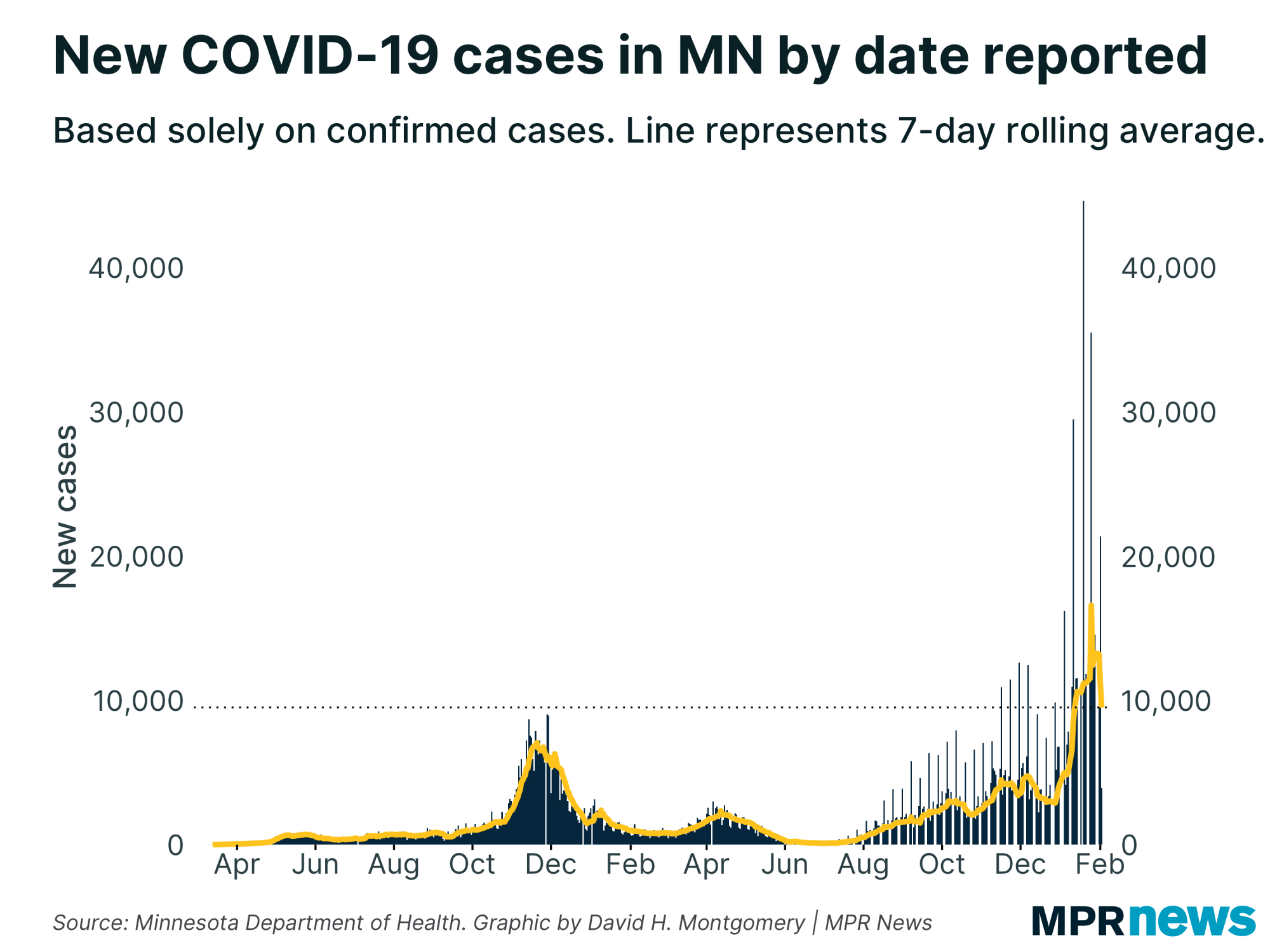
State announces test capacity increase with saliva test
The state plans to use $14 million in federal CARES Act relief funds to build capacity to conduct up to 30,000 saliva-based tests daily. It's an effort to meet greater demand for testing and make it more widely available.
The state will rely on a test developed by Vault Health and Rutgers University that detects the virus in saliva. Federal aid funds will go to building a test processing site in Minnesota to speed up results.
Minnesota is already conducting 22,000 diagnostic tests daily. But Minnesota Health Department Commissioner Jan Malcolm says more than doubling that capacity with saliva tests will help meet demand for tests as schools reopen.
"For schools, it's going to be critically important that we be able to distinguish the typically respiratory illnesses that kids and teachers encounter from COVID-19," she said.
The saliva test also stands to cut down on the use of scarce personal protective equipment.
The Vault test was given the green light under the Food and Drug Administration's emergency use authorization, which allows products on the market in an emergency before they are approved.
Research suggests the test isn't as sensitive as the nasal swab tests that are being used to diagnose COVID-19 now.
But it's still valuable in doing testing of large groups of people and for figuring out how prevalent coronavirus is in a population.
— Catharine Richert
School year changes abruptly for some southern Minn. students
Back-to-school plans started fraying at the edges Monday, even as students headed back into classrooms around the state.
Two southwestern Minnesota districts, in Minneota and Ivanhoe, postponed the start of the school year by a week, to Sept. 1, after a staffer was confirmed to have COVID-19.
And even as the Minnesota State college and university system started classes, the University of Minnesota put off students returning to some of its campuses by at least two weeks.
Malcolm said Monday that Minnesotans needed to take extra precautions now if they want to get students back to school.
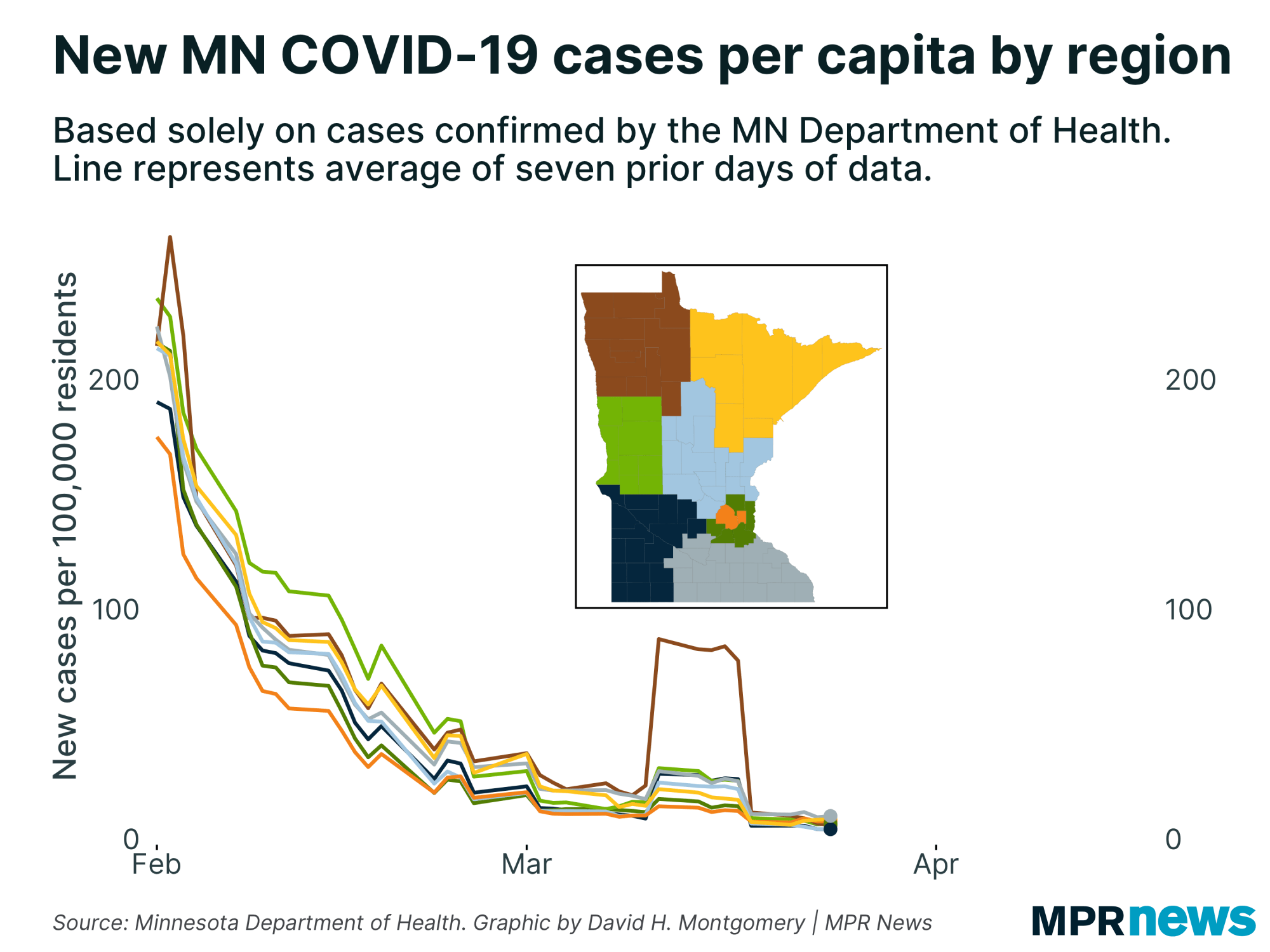
“Avoid gatherings outside of your household and really be mindful of what you're doing in the last couple of weeks before returning to school,” she said.
Several districts have already shifted away from initial plans for in-person learning — and others are considering it.
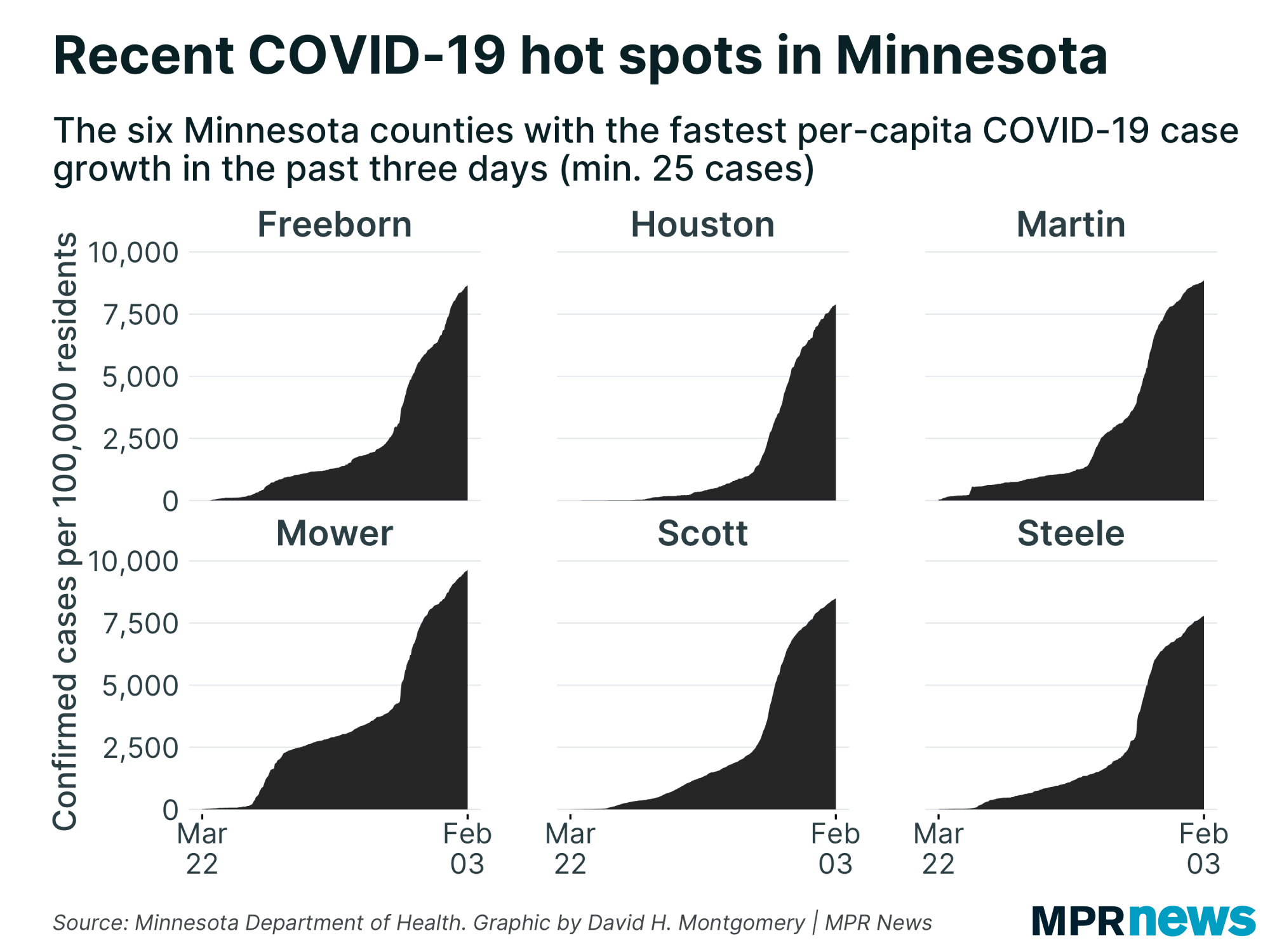
New cases have slowed considerably in recent weeks, although the problem has resurfaced recently in McLeod County, where more than 20 employees at a Seneca Foods plant in Glencoe were identified in an outbreak.
Le Sueur and Waseca counties are also seeing recent case increases. Le Sueur showed 316 cases and two deaths as of Sunday. State infectious disease director Kris Ehresmann said that while there has been some workplace transmission of the disease, the jumps in those counties is due to community spread.
College concerns continue
Worries continue over the growth of COVID-19 among younger Minnesotans, including that those infected will inadvertently spread the virus to older relatives and other more vulnerable people.
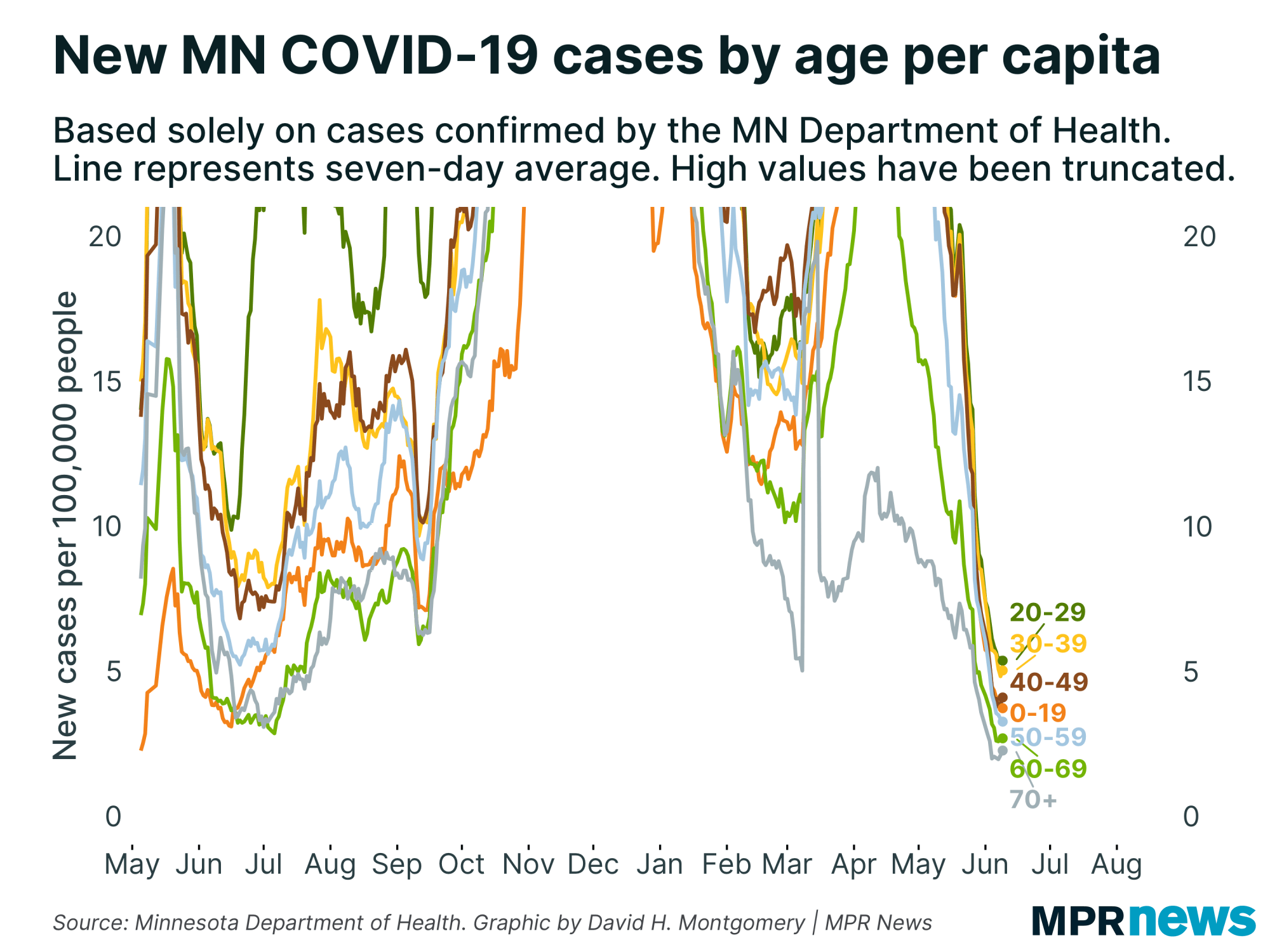
People in their 20s remain the age group with the highest number of COVID-19 confirmed cases in the pandemic — more than 16,000. The median age of cases is 36.
The University of Minnesota’s Board of Regents approved a proposal to delay in-person classes for students on some of its campuses.
According to the plan, nearly all undergraduate classes on three of the university’s campuses — in the Twin Cities, Rochester and Duluth — will now begin online for at least the first two weeks of school this fall. Move-in for students who live in on-campus housing at those three locations will also be delayed by two weeks.
The university’s Twin Cities campus is scheduled to begin classes on Tuesday, Sept. 8.
The Crookston and Morris campuses will begin the semester as planned.

State public health leaders worried for weeks that the massive Sturgis, S.D., motorcycle rally would be a petri dish for COVID-19, and that Minnesotans would carry the disease back home.
On Friday, they confirmed the first cases had arrived — 15 Minnesotans who’d traveled to Sturgis tested positive, and one was in the hospital — and they braced the state to prepare for more stemming from the mid-August rally.
By Monday, state health officials reported 27 cases in Minnesota tied to the rally: Two had been workers or volunteers at the event; the rest were attendees. They represented 24 different Minnesota households, officials said.
One infected person was hospitalized for three days, officials said, but had since been discharged.
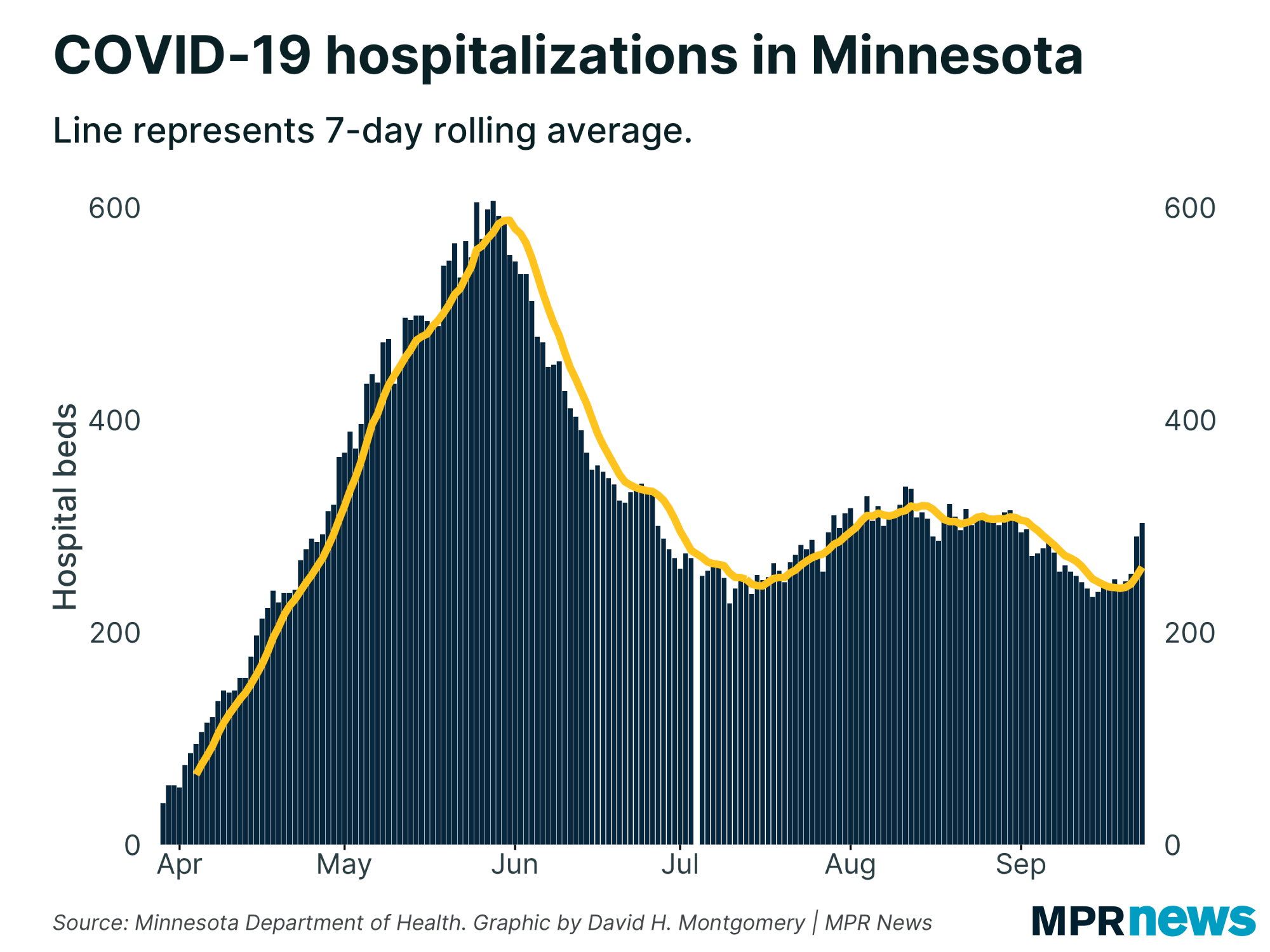
The Sturgis rally drew some 460,000 people from across the country. Most people didn't take significant precautions against COVID-19 infections.

State health officials urged anyone who traveled to Sturgis to self-isolate for 14 days, get tested if they don’t feel well and to stay home until they get the test results.
Developments from around the state
School guidance map shifts again
The evolving COVID-19 pandemic in Minnesota continues to change school reopening recommendations around the state.
In the latest batch of calculations released Thursday, 11 counties saw their recommendations change for the worse if school started today, away from in-person learning for all students, while six counties saw improvements.

St. Louis County, for example, had a two-week total of 7.6 new cases per 10,000 residents in last week’s update. In this week’s update, which covers from July 26 to Aug. 8, St. Louis County averaged 11.5 cases per 10,000 residents.
That changed the recommendation for schools there from in-person learning for all students to in-person learning for elementary students and a mix of in-person and distance learning for upper grades.
Officials say the school reopening recommendations from per-capita case figures are intended to be a starting point for decision-making, with the final calls made by school districts in consultation with the Department of Health.
There’s no geographic pattern to where counties are seeing their recommendations go up or down.
For example, among the nine counties in southwest corner of Minnesota, three saw their recommendation change for the worse in this week’s update, four saw improvements, and two stayed the same.
Overall, 51 counties with about 23 percent of the state’s population currently have a recommendation of in-person learning for all students. Another 26 counties with 32 percent of the state’s population are in the category of in-person learning for elementary students and hybrid learning for secondary students.
Nine counties have case levels high enough to suggest hybrid learning for all students in the Health Department’s rubric — but they include Hennepin, Ramsey, Dakota and Scott counties, and altogether cover 45 percent of the state’s population.
Just one county, Red Lake, is recommended to have elementary students do hybrid learning while secondary students do remote learning full time.
No counties currently have so many cases that they’d be recommended to have all students remote, if school started today.
— David Montgomery | MPR News
Need help with rent, mortgage? Here’s how to get it
Minnesotans can now apply for a slice of the $100 million in rent and mortgage assistance from Minnesota Housing.
The money is intended for Minnesotans who are financially struggling from COVID-19 and meet certain income requirements. Applicants can call 211 from 8 a.m. to 8 p.m.; staff speaking multiple languages will be on hand.
They can also text 211 and type “MNRENT,” or go online to 211unitedway.org. Once the process begins, applicants can track their status online. The $100 million dollars is from the federal CARES act and can help pay housing costs like rent, mortgage, lot fees in manufactured home parks, and utility payments.
While the money is for both homeowners and renters, Minnesota Housing Commissioner Jennifer Ho said she hopes homeowners are exploring all their options.
“We really encourage people who have a mortgage to reach out to their financial institution, and find out if they are eligible to get forbearance because a lot of financial institutions are offering the ability not to pay right away," Ho said.
— Melissa Townsend | MPR News
Top headlines
Minnesota bets big on coronavirus saliva testing to double capacity: With students heading back to school this fall, state officials say demand for coronavirus testing could skyrocket. The state’s new $14 million plan to test saliva for the virus could help Minnesota double its capacity.
U of M regents agree to delay in-person classes on Twin Cities, Rochester, Duluth campuses: Undergraduate students in the Twin Cities and two other campuses will have to wait at least two weeks to walk back into the classroom and move into their dorm rooms, the Board of Regents decided Monday.
COVID-19 in Minnesota
Data in these graphs are based off Minnesota Department of Health cumulative totals released at 11 a.m. daily. You can find more detailed statistics on COVID-19 at the Health Department website.
The coronavirus is transmitted through respiratory droplets, coughs and sneezes, similar to the way the flu can spread.


